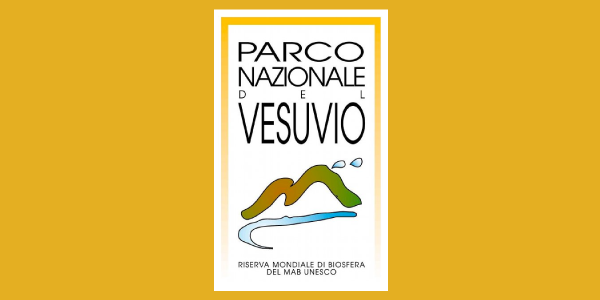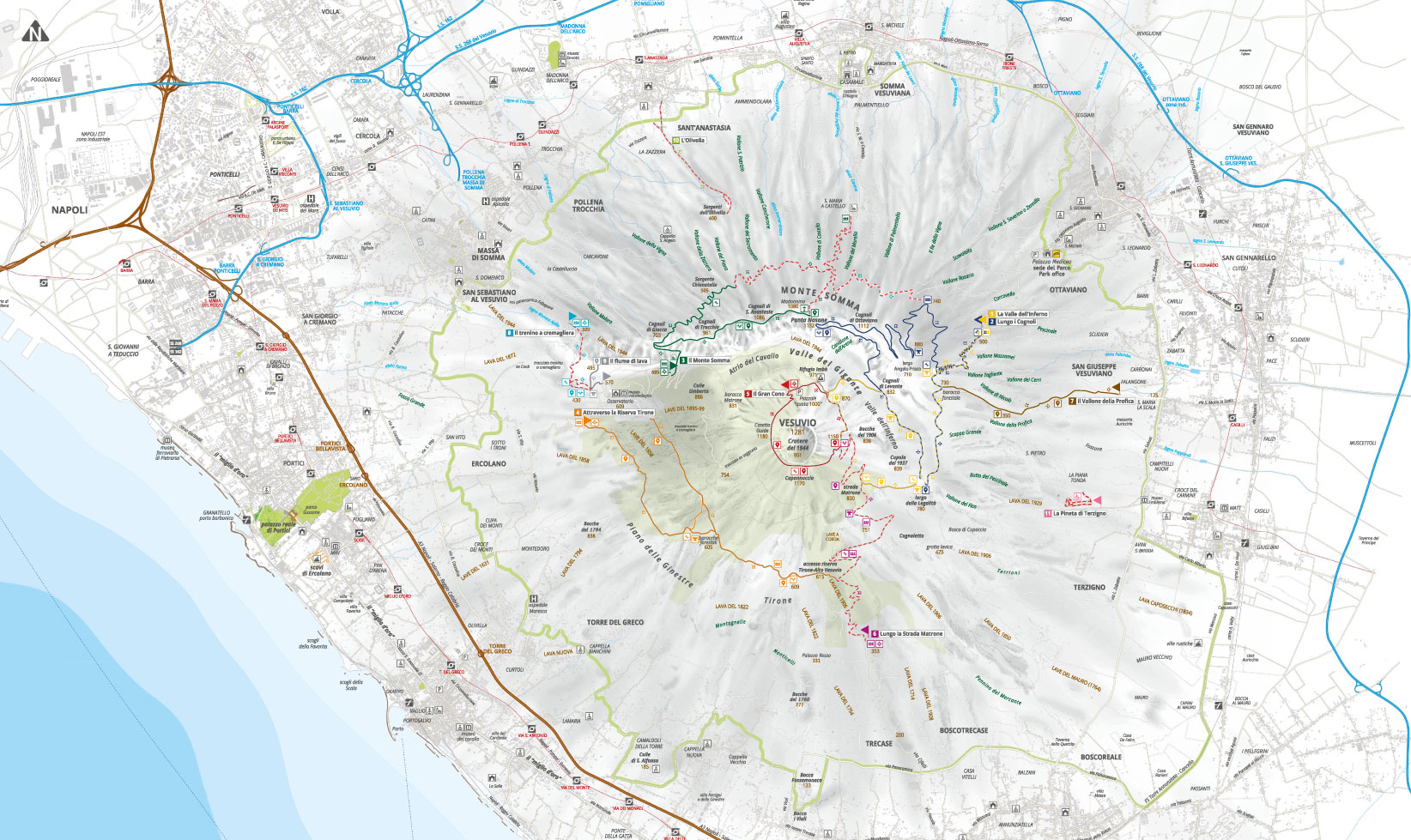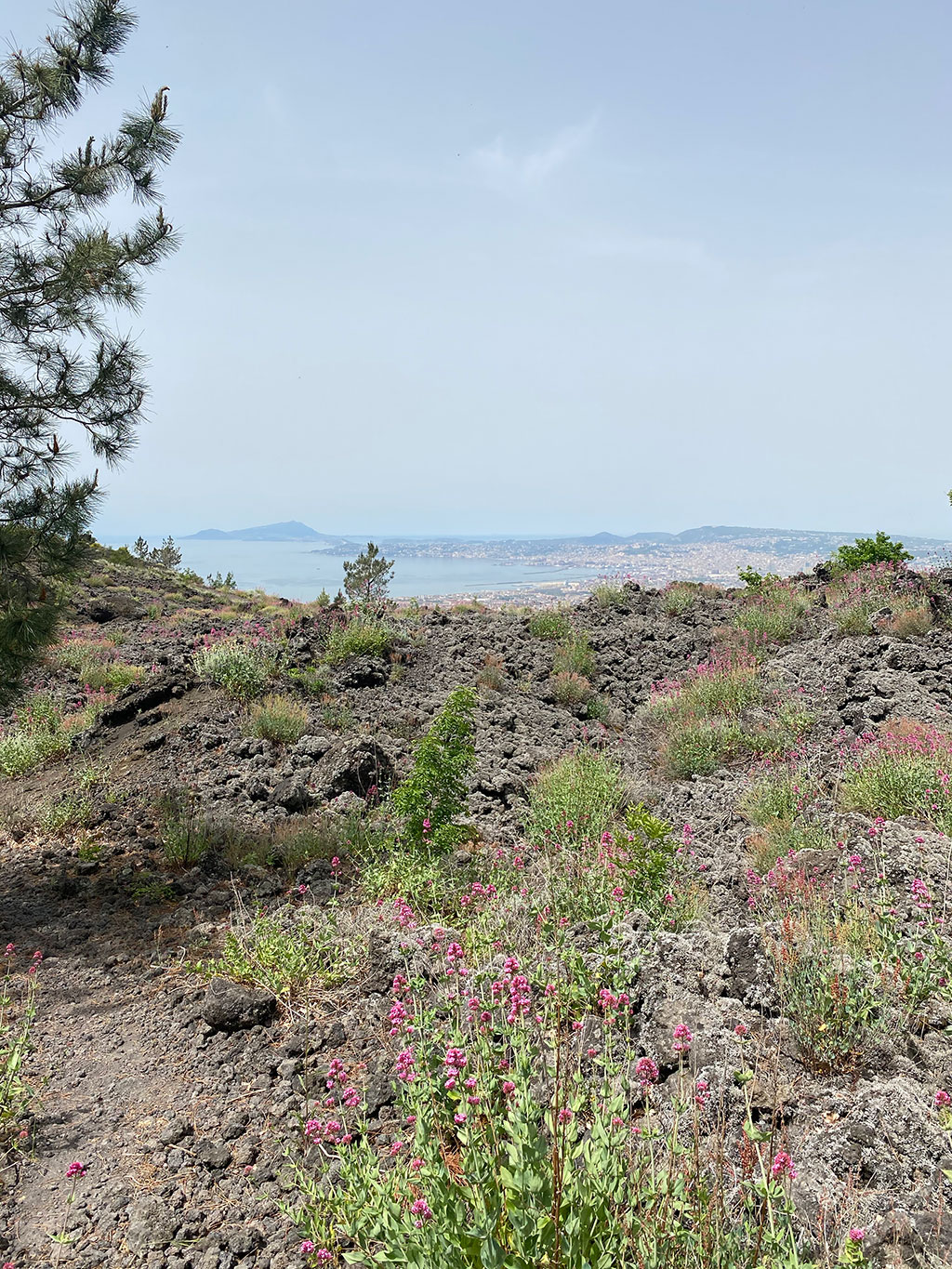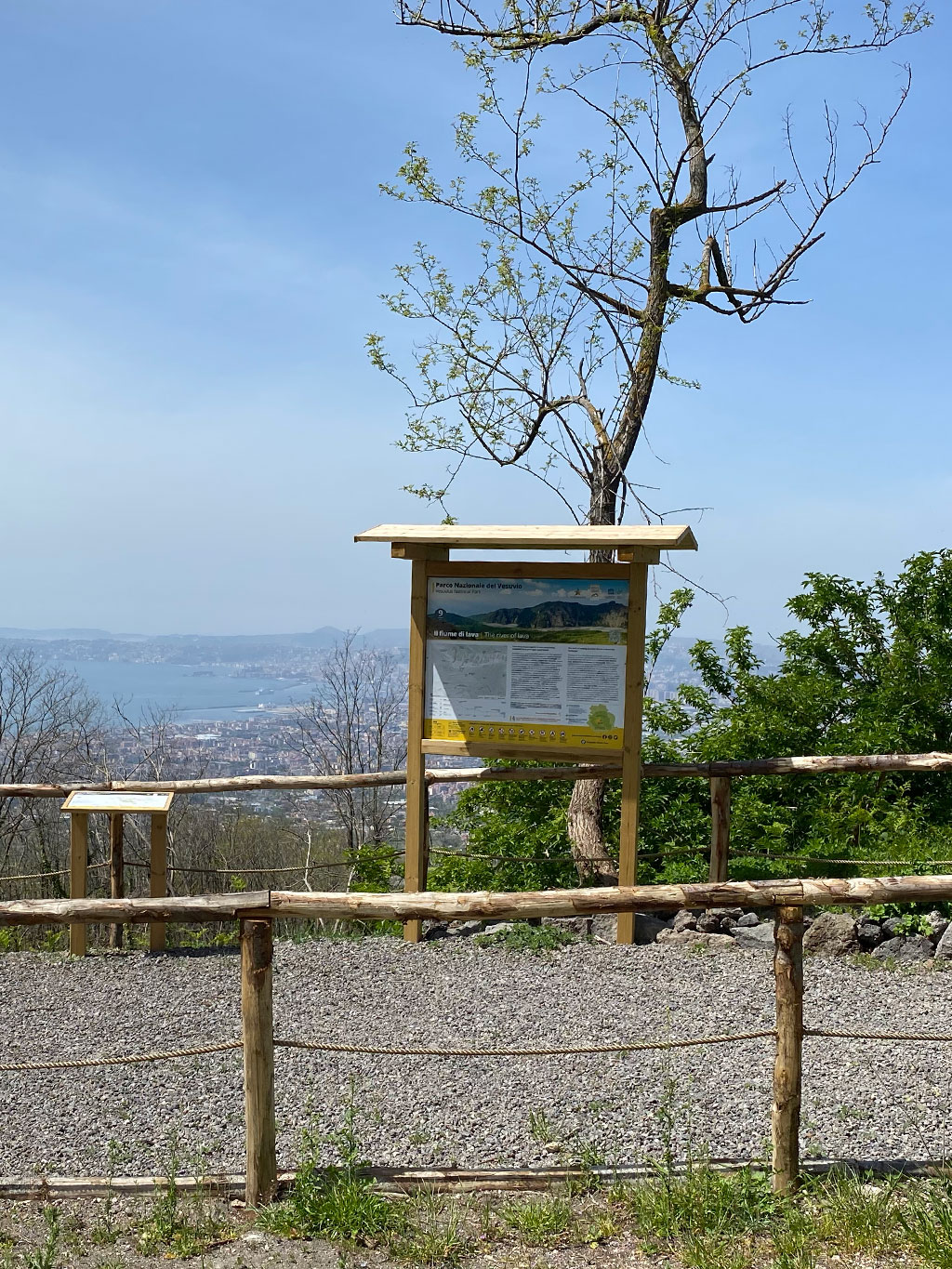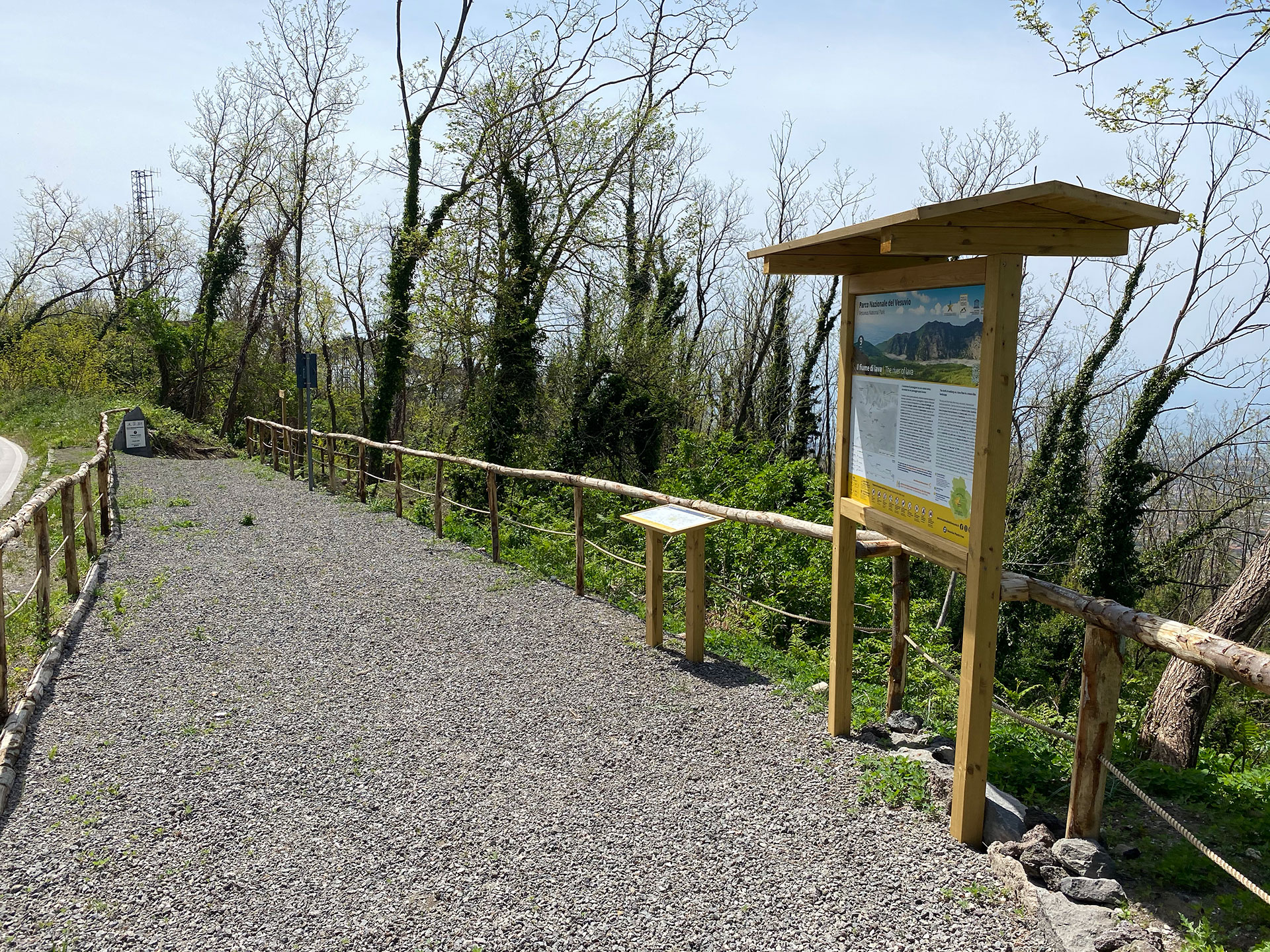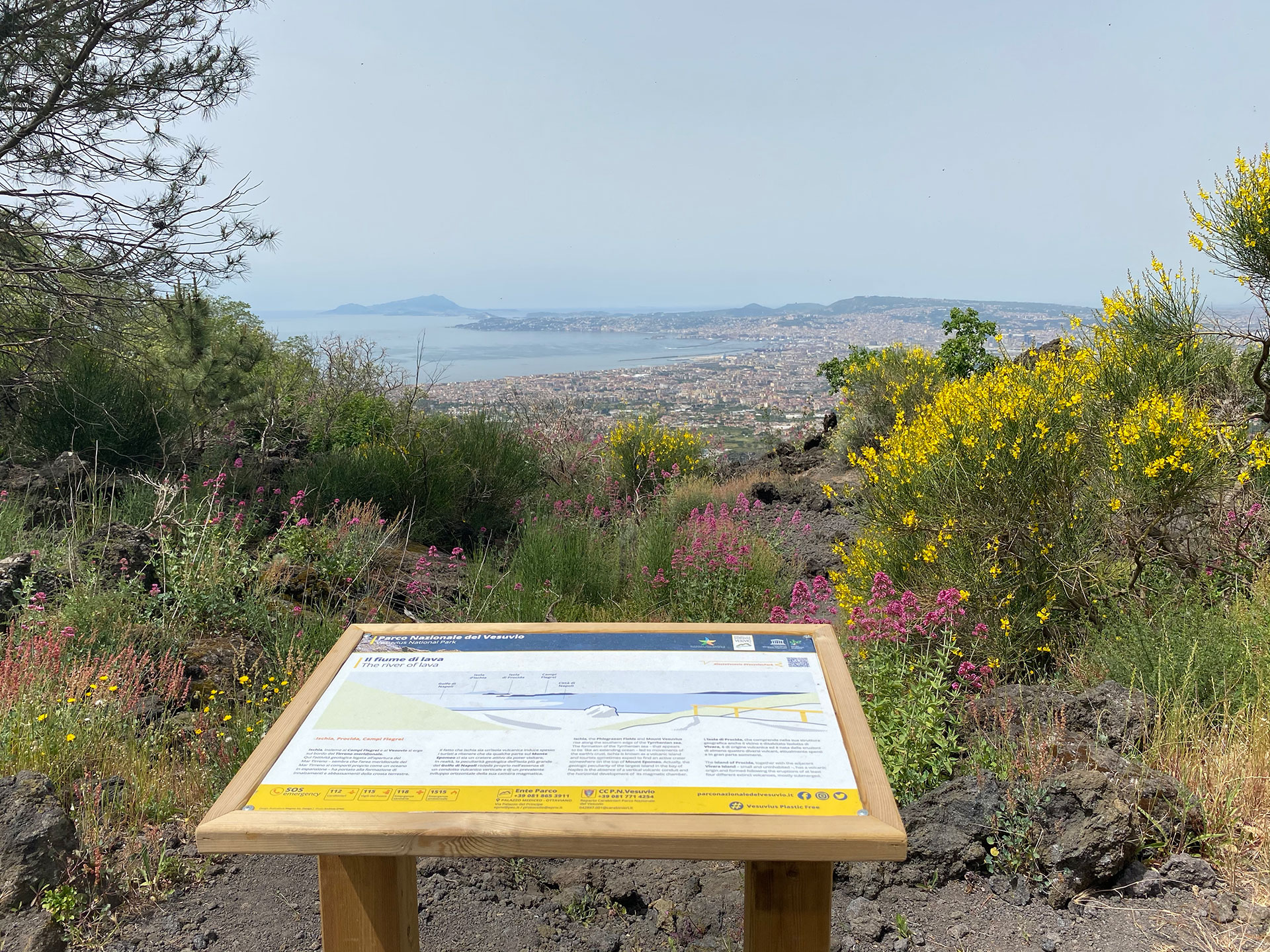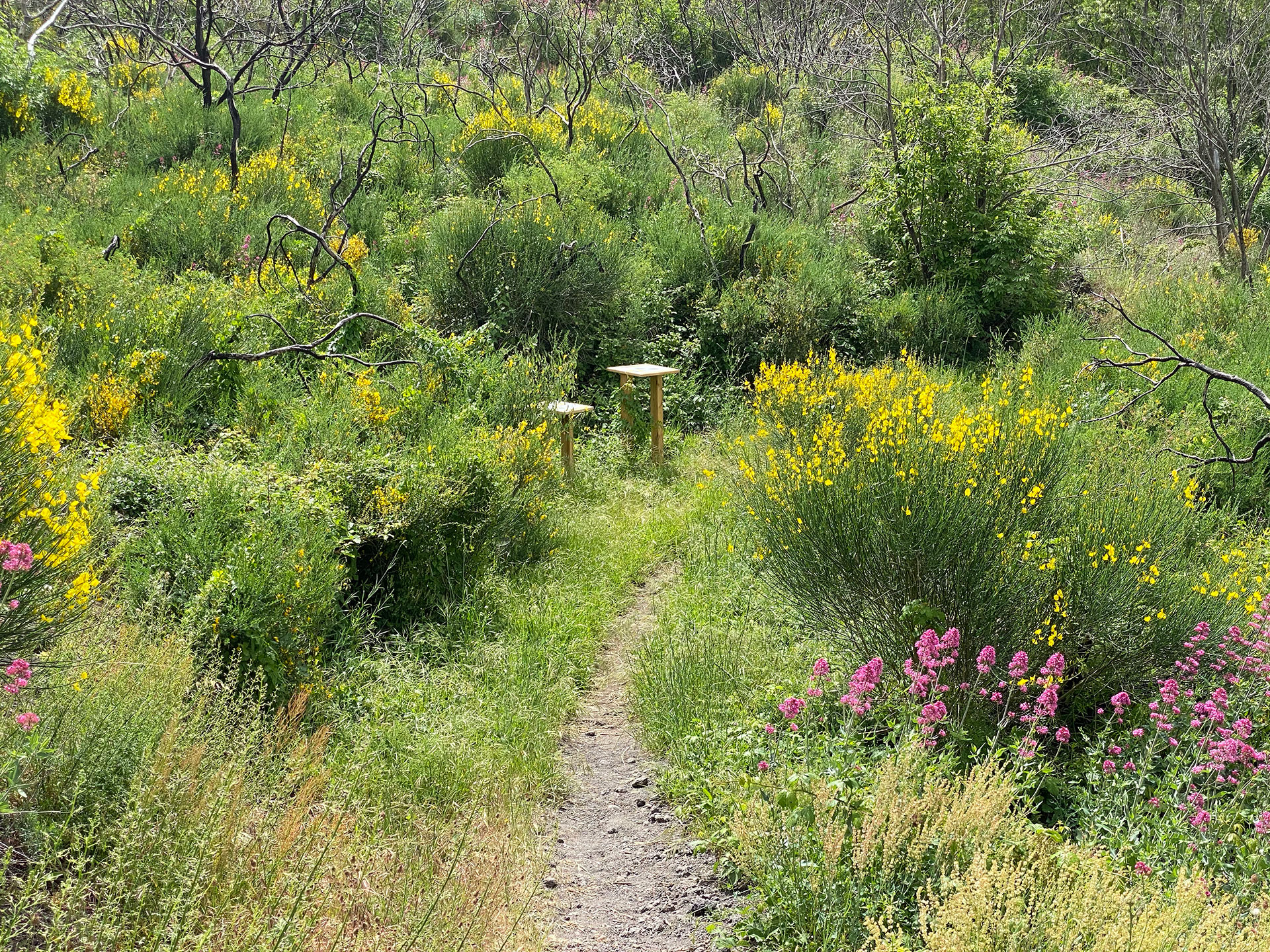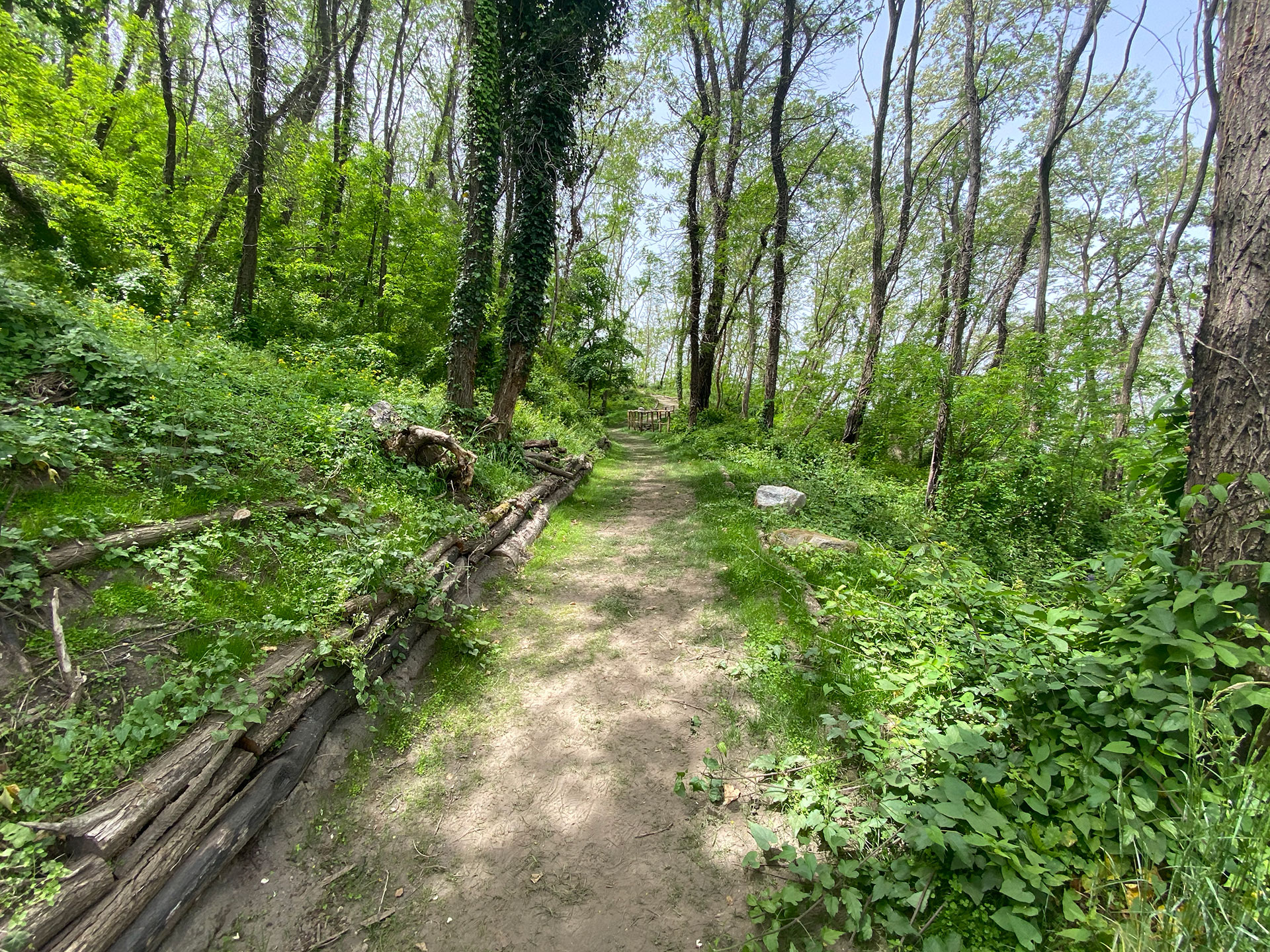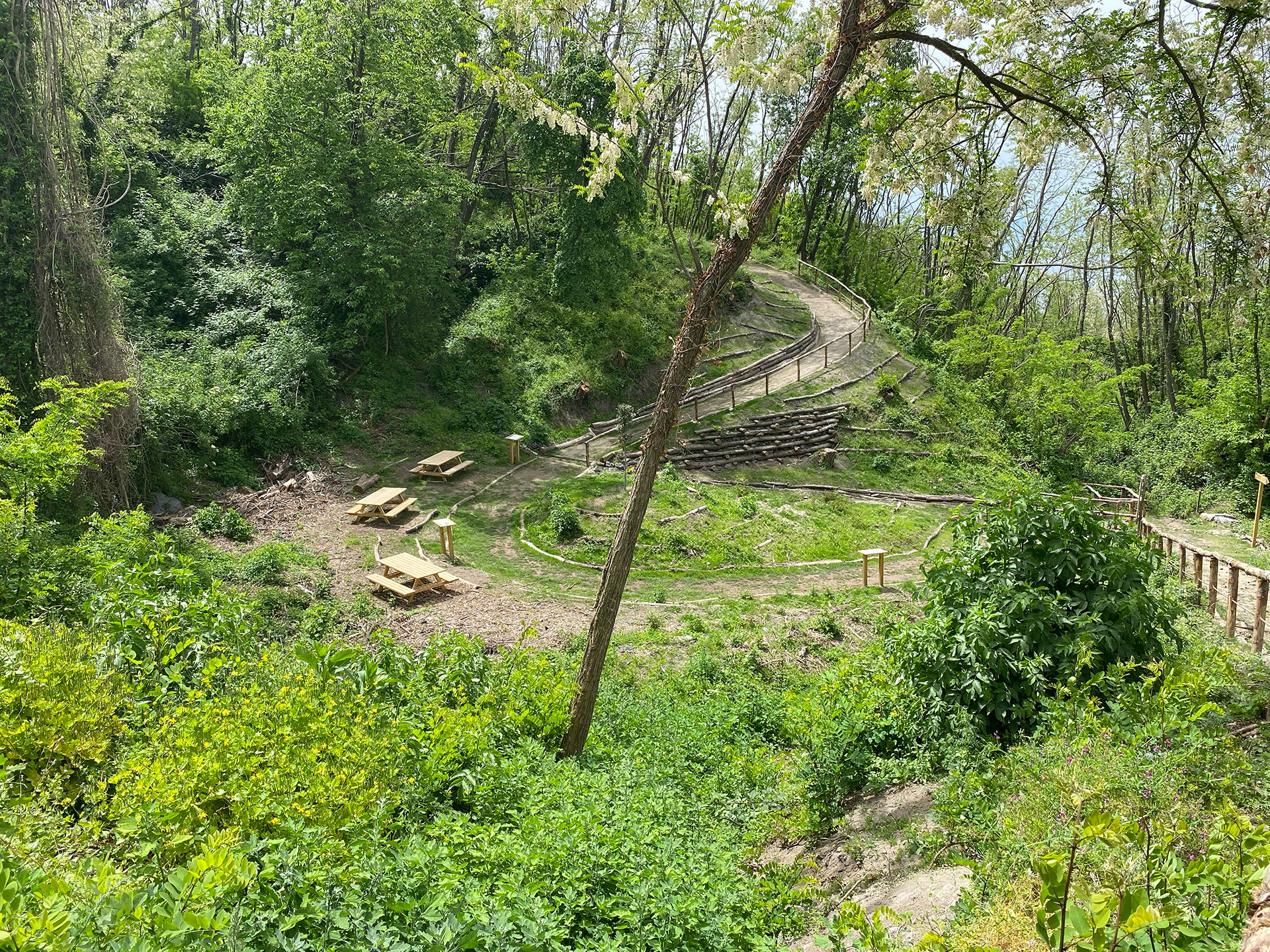Thanks to this itinerary, you can experience the thrill of walking on a lava flow, surrounded by an almost lunar landscape. The route, particularly suitable for school children, starts near the Vesuvius Observatory and it is also possible to visit the museum, annexed to the structure, which displays ancient scientific instruments and a permanent exhibition about the fascinating world of volcanoes.
As soon as you take the path, you proceed downhill immersing yourself in a broad-leaved forest, with species such as locust trees, chestnut trees, hazelnut trees, European hop-hornbeams and downy oaks, while in the undergrowth there are specimens of hawthorns.
After a large step, you enter a choke point whose walls have the pumices of 79 AD, until you get to a widening, a meeting point with the downhill trail of path n. 8, where you can see a well of Bourbon age for the collection of rainwater and a beautiful specimen of elderberry.

Please be extremely careful on the trails, always check weather conditions and wear appropriate shoes.
The Park Authority has no competence for safety and so it is not responsible for any damage to people and things that may occur during the use of the Park territory.
Moving forward, after a first uphill stretch, the pavement is flat. The undergrowth is enriched with plants such as euphorbia, ivy, wild rose and black bryony, which can be easily recognised thanks to the climbing creeks and small red berries that ripen in autumn, while in spring it is possible to admire species of orchids, such as the Dactylorhiza saccifera, pink flowers with purple stripes.
Take another step and enjoy the colour explosion of the Maquis shrubland: the yellow of the brooms and the Helichrysum, the purple of the valerian, the lilac of the Scabiosa, the white of the wild carrot.
The stretch of the Maquis shrubland leads to the “lava river”, colonized by the pioneer lichen Stereocaulon vesuvianum, which gives it a typical silver-grey colour. On the left, a rocky outcrop extends towards Naples: your gaze is lost on the Neapolitan gulf with its islands and on the bare slopes of Mount Vesuvius and the cognoli of Giacca and Trocchia of Mount Somma.
The lava flow dates back to the eruption of 1944, the last one that occurred: 21 million cubic metres of lava were emitted, numerous inhabited centres were destroyed and the ashes reached as far as Albania.
To return, you need to walk in the opposite direction, the destination of the itinerary coincides with the starting point.
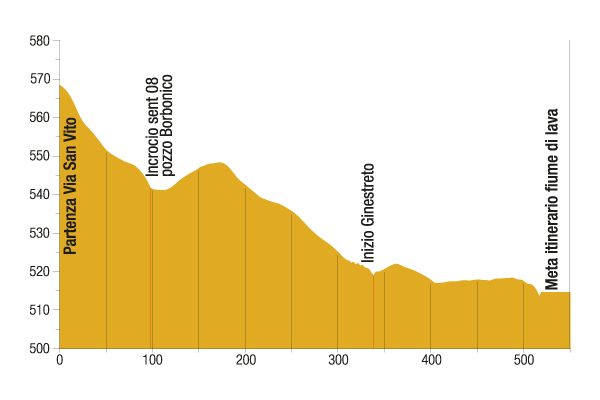
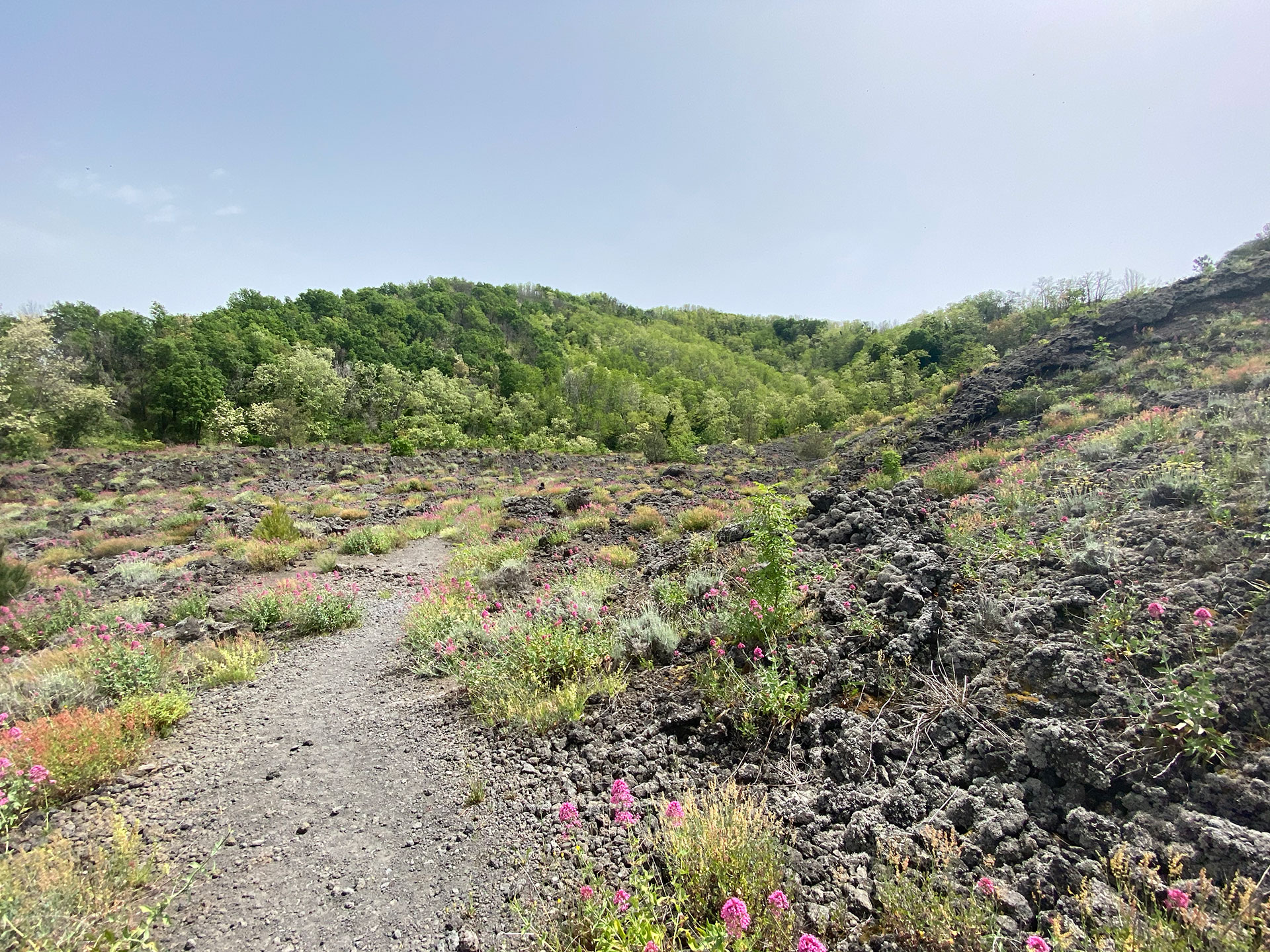
Visit the other paths

The trail network is in overall redevelopment and maintenance and some paths may not be equipped with signs. Contact the Park Authority for more information.
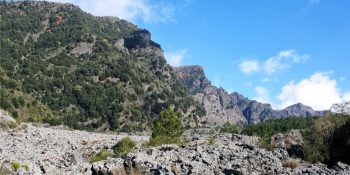
The Valley of Hell
Path N. 1 - The most beautiful places and the most representative environments of the protected area.
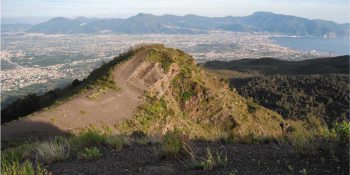
Along the Cognoli
Path N. 2 - The most beautiful and wild scenery of Somma-Vesuvius.
![]() Nature trail towards Somma Vesuviana temporarily closed
Nature trail towards Somma Vesuviana temporarily closed
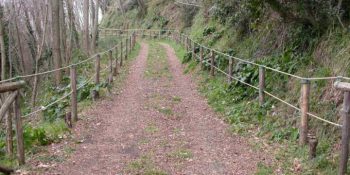
The Mt Somma
Paths N. 3 - This fascinating ring route leads to Punta Nasone, which with its 1,132 metres is the highest peak of Mount Somma.
![]() Nature trail from Somma Vesuviana temporarily closed
Nature trail from Somma Vesuviana temporarily closed
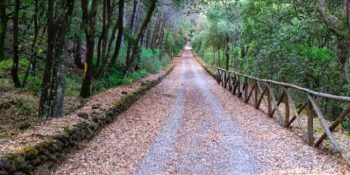
The Tirone Reserve
Path N. 4 - The track is located within the Tirone-Alto Vesuvius Forest Reserve, which covers about 1,000 hectares.
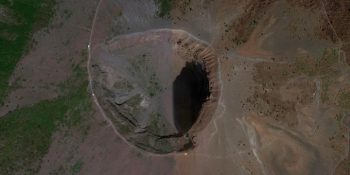
The Great Cono
Path N. 5 - A guide to visit the Crater of the Vesuvius.
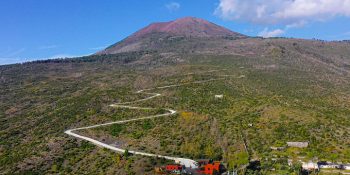
The Matrone Road
Path N. 6 - The path corresponds to the ancient road traced by the Matrone brothers to go back to the Gran Cono from the side of Boscotrecase; …
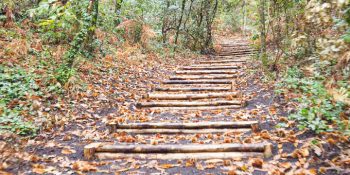
The Profica Valley
Path N. 7 - The itinerary, which is known as the “agricultural path”, winds along the slopes of the lesser known side of Mount Somma, the …
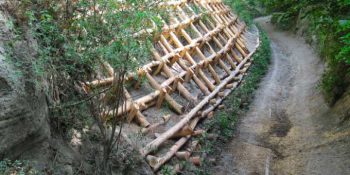
The Rack Railway
Path N. 8 - The itinerary follows the historical route for the ascent of Mount Vesuvius from the town of San Sebastiano to the foot of the hill …
![]()
Closed nature trail where maintenance
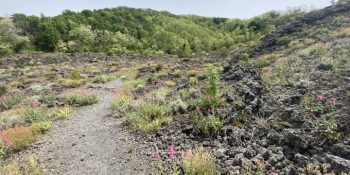
The River of lava
Path N. 9 - Thanks to this itinerary, you can experience the thrill of walking on a lava flow, surrounded by an almost lunar landscape.
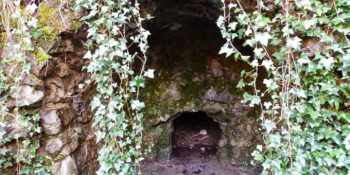
The Olivella
Path N. 10 - The itinerary retraces the Olivella path, which climbs through the countryside of Sant'Anastasia and leads to the homonymous springs, …
![]()
Closed nature trail where maintenance
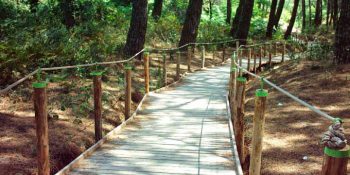
Terzigno Pinewood
Path N. 11 - The path is flat and is inside a thick pine forest, designed for pleasant walks and for people with limited difficulties.
